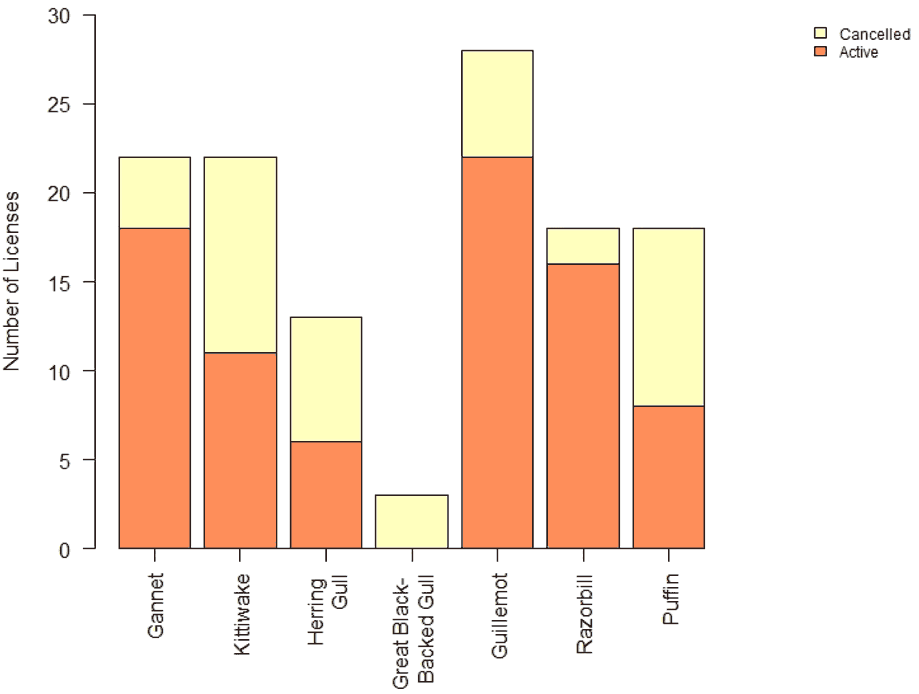Offshore wind energy - sectoral marine plan: seabird tagging feasibility
How to undertake a seabird tagging study for species and colonies potentially impacted by the sectoral marine plan for offshore wind energy
Existing and recent SMTP permissions for tagging focal species
Since 2010, 125 licences have been issued to deploy tags on gannets, kittiwakes, herring gulls, great black-backed gulls, guillemots, razorbills, and puffins in the UK and Ireland (Figure 12). Of these, 81 were still in place in 2022, though several have not deployed any devices in recent years. It should be noted that these studies may cover multiple sites across multiple years, and that several researchers may be covered to deploy devices under each licence. However, these studies provide a useful indication of the methods that have received approval in recent years and highlight where further innovation may be required. Whilst cancellation of a licence may reflect the ending of a project, it is important to note that in some instances, projects have been cancelled, or placed on hold, due to reported device effects. This is the case for trials of harness attachment methodologies for both kittiwake and great black-backed gull and glue deployments on kittiwakes.


The most widely used approach has involved devices, such as geolocators or time-depth recorders, mounted on leg-rings (Figure 13). These devices provide information on behaviour and approximate location, both during the breeding and non-breeding seasons (Table 3). However, larger GPS devices are necessary for finer scale location data, such as foraging movements during the breeding season (Table 3). These have been deployed using either backpacks or tailpacks, and secured using harnesses, tape or glue (Figure 13).
With the exception of gannet (Figure 13), the greatest number of licenses for deploying GPS devices on the focal species have involved back-mounted devices (though note that this does not necessarily relate to the total number of individuals from each species). For kittiwakes and auks, the most widely licensed approach has been devices mounted on birds’ backs using Tesa tape, though for kittiwakes, glue mounting has also been used.
Trials of thoracic tracheal knot backpack harnesses for kittiwakes and great black-backed gulls have been discontinued due to reported negative effects. For kittiwake, negative device effects were also reported when using a leg-loop backpack harness, through these were less severe than the reported effects of the thoracic tracheal knot harness, leading to suggestions that a modification of this design may be suitable (Clewley et al., 2022). A study using tesa tape backpack mounted devices in puffins has also been placed on hold whilst the SMTP consider evidence from associated monitoring studies.
Contact
Email: ScotMER@gov.scot
There is a problem
Thanks for your feedback